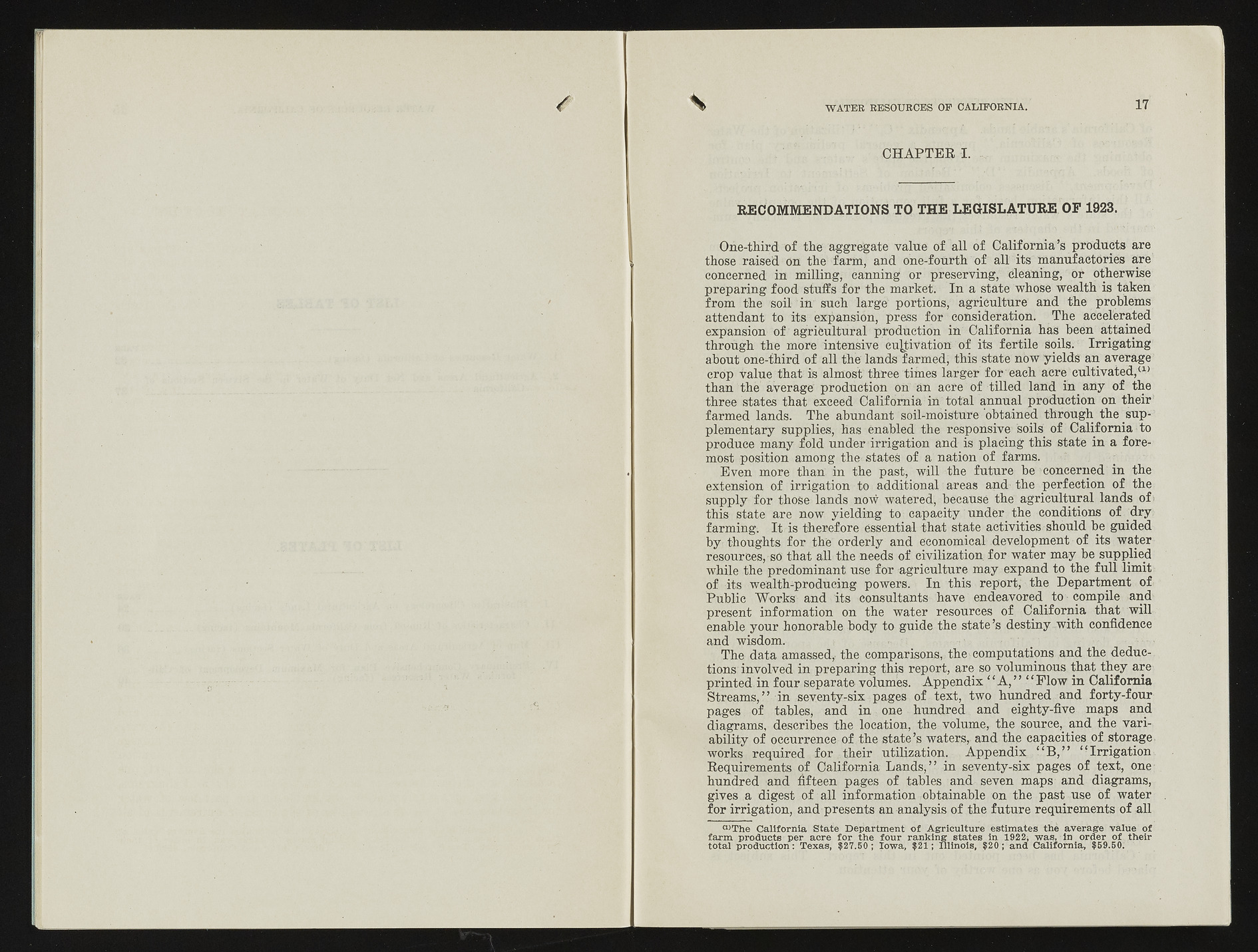Copyright & Fair-use Agreement
UNLV Special Collections provides copies of materials to facilitate private study, scholarship, or research. Material not in the public domain may be used according to fair use of copyrighted materials as defined by copyright law. Please cite us.
Please note that UNLV may not own the copyright to these materials and cannot provide permission to publish or distribute materials when UNLV is not the copyright holder. The user is solely responsible for determining the copyright status of materials and obtaining permission to use material from the copyright holder and for determining whether any permissions relating to any other rights are necessary for the intended use, and for obtaining all required permissions beyond that allowed by fair use.
Read more about our reproduction and use policy.
I agree.Information
Digital ID
Permalink
Details
Member of
More Info
Rights
Digital Provenance
Publisher
Transcription
17 CH APTER 1 RECOMMENDATIONS TO THE LEGISLATURE OF 1923. One-third of the aggregate value of all of California’s products are those raised on the farm, and one-fourth of all its manufactories are concerned in milling, canning or preserving, Cleaning, Or otherwise preparing food stuffs for the market. In a state whose wealth is taken from the soil in such large portions, agriculture and the problems attendant to its expansion, press for consideration. The accelerated expansion o f agricultural production in California has been attained through the more intensive cultivation of its fertile soils. Irrigating about one-third of all the lands farmed, this state now yields an average crop value that is almost three times larger for each acre cultivated/1' than the average' production on an acre of tilled land in any of the three states that exceed California in total annual production on their farmed lands. The abundant soil-moisture obtained through the supplementary supplies, has enabled the responsive soils of California to produce many fold under irrigation and is placing this state in a foremost position among the states of a nation of farms. Even more than in the past, will the future be concerned in the extension of irrigation to additional areas and1 the perfection of the supply for those lands now watered, because the agricultural lands of > this state are now yielding to capacity under the conditions of dry farming. It is therefore essential that state activities should be guided by thoughts for the orderly and economical development of its water resources, so that all the needs o f civilization for water may be supplied while the predominant use for agriculture may expand to the full limit of its wealth-producing powers. In this report, the Department of Public Works and its consultants have endeavored^ to compile and present information on the water resources of California that will enable your honorable body to guide the state’s destiny with confidence and wisdom. , , : ' : . The data amassed,, the comparisons, the computations and the deductions involved in preparing this report, are so voluminous that they are printed in four separate volumes. Appendix “ A ,” “ Plow in California Streams,” in seventy-six pages of text, two hundred and forty-four pages of tables* and in one hundred and eighty-five maps and diagrams, describes the location, the volume, the source^ and the variability of occurrence of the state’s waters, and the capacities of storage, works required for their utilization. Appendix “ B ,” “ Irrigation Requirements of California Lands, ’ ’ in seventy-six pages of text, one; hundred and fifteen pages of tables and seven maps and diagrams, gives a digest of all information obtainable on the past use of water for irrigation, and presents an analysis of the future requirements of all “ ’The California State Department of Agriculture estimates the average value of farm products per acre for the four ranking states in 1922; was, in order of their total production: Texas, $27.60 ; Iowa, $21; Illinois, $20; and California, $59.50.

